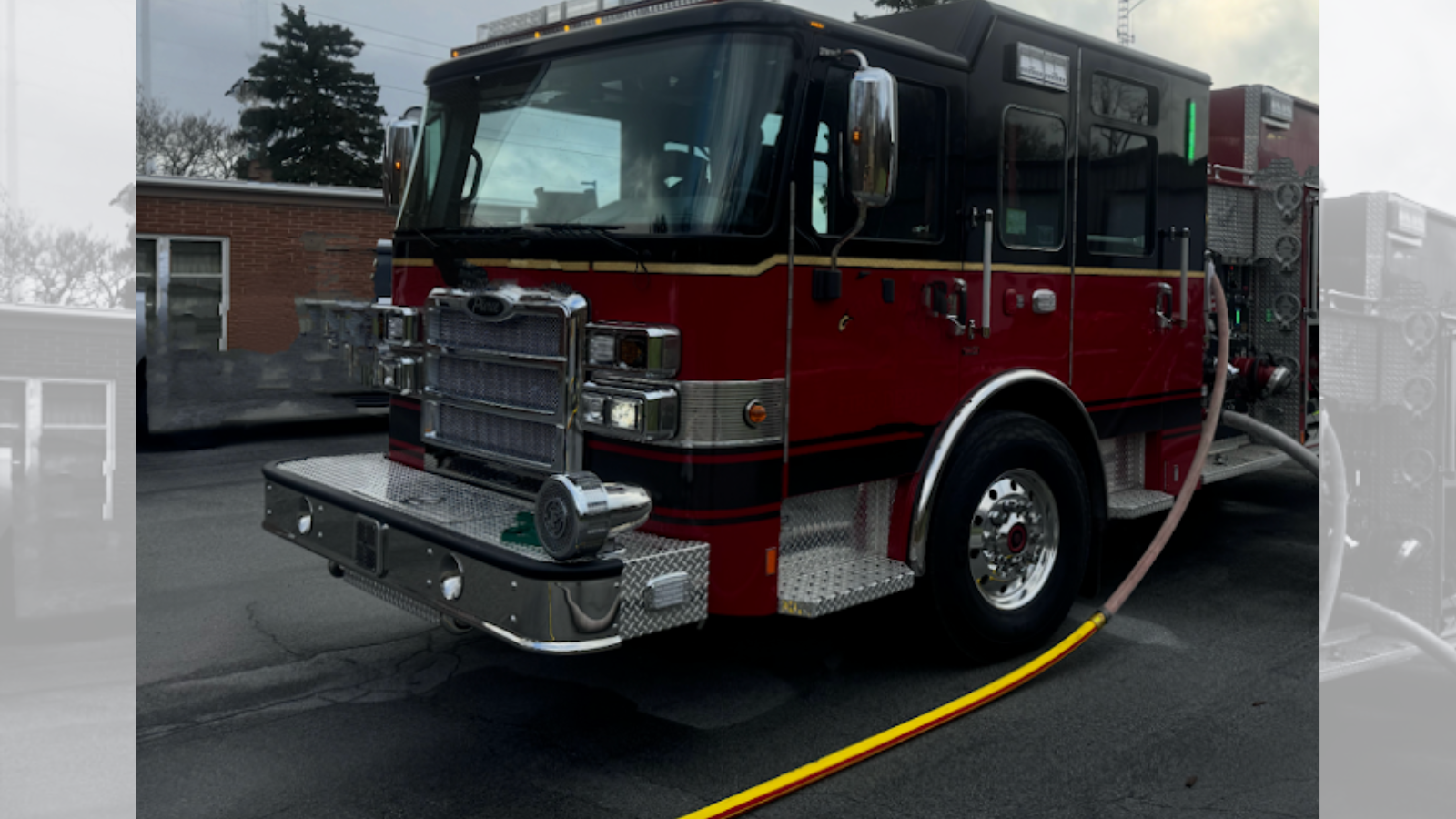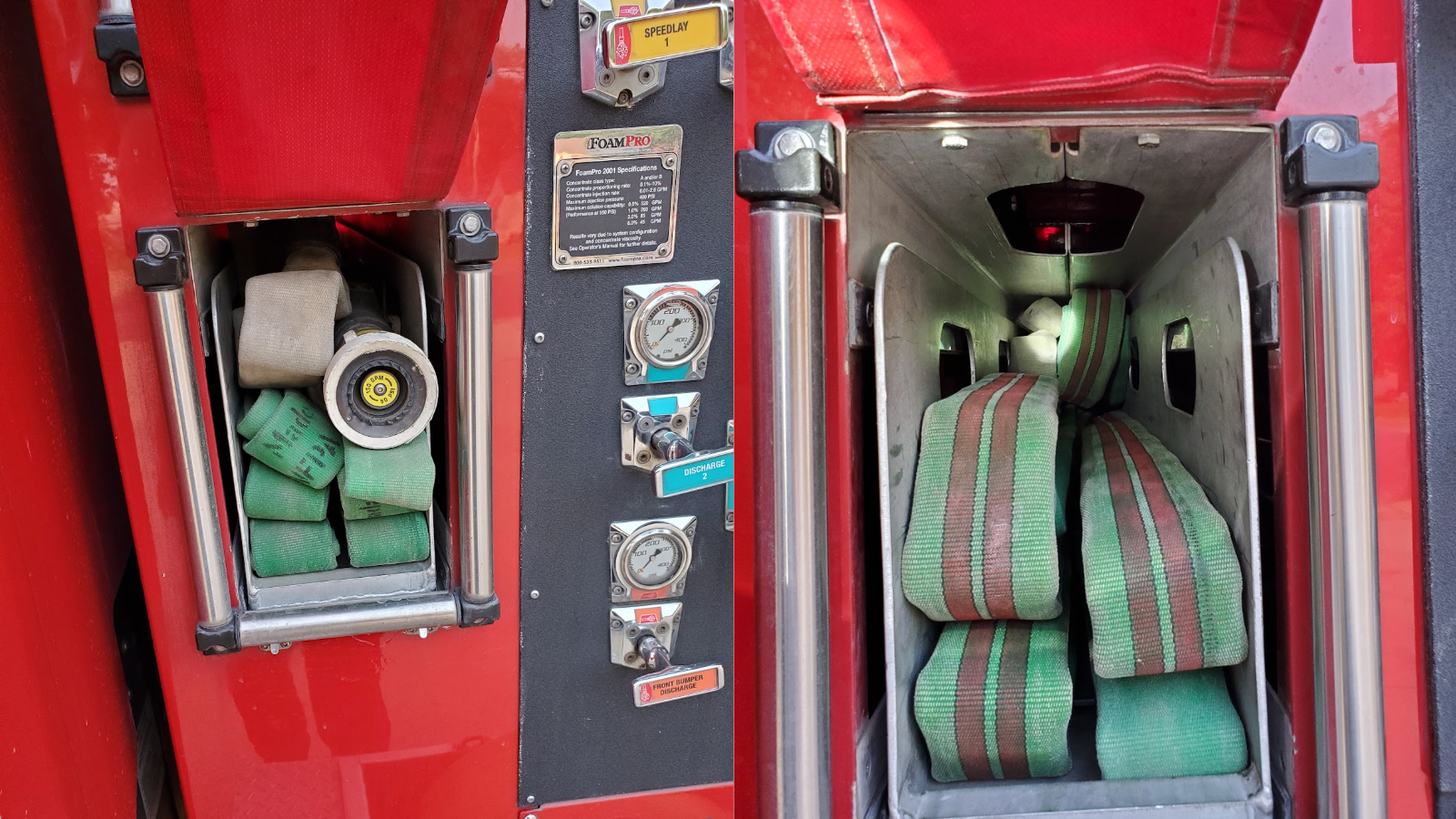When building hose and nozzle packages for Engine Company operations, most fire departments focus on testing flow rates, comparing nozzles, and determining optimal stretch lengths.
These are critical considerations—and a solid Engine Company deployment model should answer them. But there’s one small detail that often gets overlooked, despite its outsized impact on the fireground: The Pony Tail.
It goes by many names. Firefighting is a local business—what one department calls a pony tail, others may refer to as a stub line, whip line, pig tail, or preconnect extension line. For clarity and consistency in this article, we’ll use the term “Pony Tail". But regardless of what your crew calls it, the purpose is the same: to create a smoother, safer, and more efficient connection between your pump discharge and attack line.
What Is the Pony Tail
The pony tail is a short section of hose—typically 6 to 15 feet long—used to connect the pump discharge to the main attack line. It’s commonly used in crosslay or speedlay configurations, helping move the working line away from the side of the pump panel and reducing congestion during initial deployment.
This setup can also be applied to engines pulling lines from the tailboard. A well-designed pony tail system positions the first coupling away from the hose tray and pump panel, allowing for a cleaner workspace for the pump operator, reduced tripping hazards, and more efficient loading and deployment of the line.
Advantages of Adding the Pony Tail
No two engines are the same. And not all discharge elbows are created equal. Whether you’re working with fixed ports or swivels, your deployment can suffer if the hose collapses or kinks right out of the gate.
That’s where a properly sized pony tail makes a difference:
- It gives the hose a gradual bend—reducing turbulence and flow disruption.
- It helps you avoid kinks at the discharge, especially with lower pressures or less rigid hose.
- It makes disconnection easier, letting firefighters drop the line from ground level—no climbing, no wasted time.
And the extra few feet? It’s a game-changer when you’re stretching to the opposite side of the engine or trying to get that first length past the tires.

The Overlooked Portion of the Pony Tail
While the pony tail offers operational advantages, there are important considerations that are often overlooked in practice.
- Excessive Length and Poor Fit
A pony tail that is too long may not fit properly in the designated hose tray. Thus, it can result in tight folds or excessive bends, increasing the chance of the hose becoming jammed during deployment. An overloaded tray may also sit too high or interfere with other equipment, ultimately reducing the ability to deploy the entire attack line smoothly.
- Ergonomic Limitations
Some pump panel and plumbing designs are not ergonomically configured to support easy reloading when a pony tail is in place. Awkward discharge angles or tight spaces can make it difficult to repack or reload the line efficiently, especially during high-tempo operations or post-incident cleanup
- Use of Old or Mismatched Hose
Departments often use older hose for pony tails due to cost savings or convenience—sometimes even transferring hose from older engines to new ones. However, older or mismatched hose may:- Lack kink resistance
- Restrict flow at the discharge due to a smaller ID compared to the rest of the attack package
- Have mismatched diameter, stiffness, or wear that can introduce failure points or inefficiency at the discharge
- Be incompatible with low-pressure modern attack packages (e.g., designed for 100 psi, not for 50–75 psi
- Standardization Is Key
If a pony tail is going to be used, it should be made from the same hose as the rest of the attack package. This ensures consistent flow characteristics, minimizes kinks, and maintains overall performance from discharge to the nozzle.
Real-World Lesson: When the Pony Tail Held Us Back
In my department, we run engines with slide-in trays for our speedlays. Originally, with a high-pressure setup, our pony tail sat low and behaved. It made post-incident repacks smooth and worked well with the pump’s recessed elbows.
But then we upgraded to a low-pressure attack system—and suddenly, things fell apart.
The pony tail pushed the hose stack higher in the tray. Deployment became snagged and unreliable. Worse? The hose section we used didn’t match the new attack line—different ID, different stiffness, different everything.
The result? Lower flow at the nozzle. Poor performance in the field.
After testing and frustration, we cut the pony tail. And instantly, deployment got smoother. Flow rates improved. Our lines performed the way they were meant to—no more bottlenecks at the discharge.
After several weeks of testing and reconfiguring the entire attack package, our department decided to remove the pony tail and connect the line directly to the discharge. This change improved deployment reliability, reduced the potential for snags, and restored intended flow performance.

The Takeaway: Small Section, Big Impact
Every piece of the hose line matters—from the pump panel to the nozzle. If you’re not evaluating your pony tail as part of your attack package, you’re missing a key part of the picture.
If it’s in the line, it should be in your testing.
- Include the pony tail in flow tests.
- Standardize it with the same hose as your attack line.
- Adjust based on feedback, not just habit.
Because the fireground doesn’t care what your spec sheet says—only how your hose performs when it counts.
About the Author:
Captain Jordan Hempker is an 18-year fire service veteran with experience in rural and suburban operations. He currently serves as a shift commander with Harrison Township Fire Department in central Ohio, where he focuses on adapting engine company tactics for limited staffing and diverse incidents. His approach emphasizes tactical clarity, aggressive operations, and leadership that meets today’s fireground challenges.
Jordan began his career as a volunteer firefighter, proudly serving for 10 years while gaining valuable experience across multiple part-time departments. He later served full-time with Shawnee Township Fire Department and American Township Fire Department, both located in Lima, Ohio.
He owns and operates Western Buckeye Training, a fire service training company focused on modern, mission-driven operations. In addition, Jordan is a consultant for Mercedes Textiles, contributing to training and education on fire hose and attack packages across North America. Jordan is married to his wife, Brittany, and they share their home with three dogs. He also takes great pride in being an uncle.

